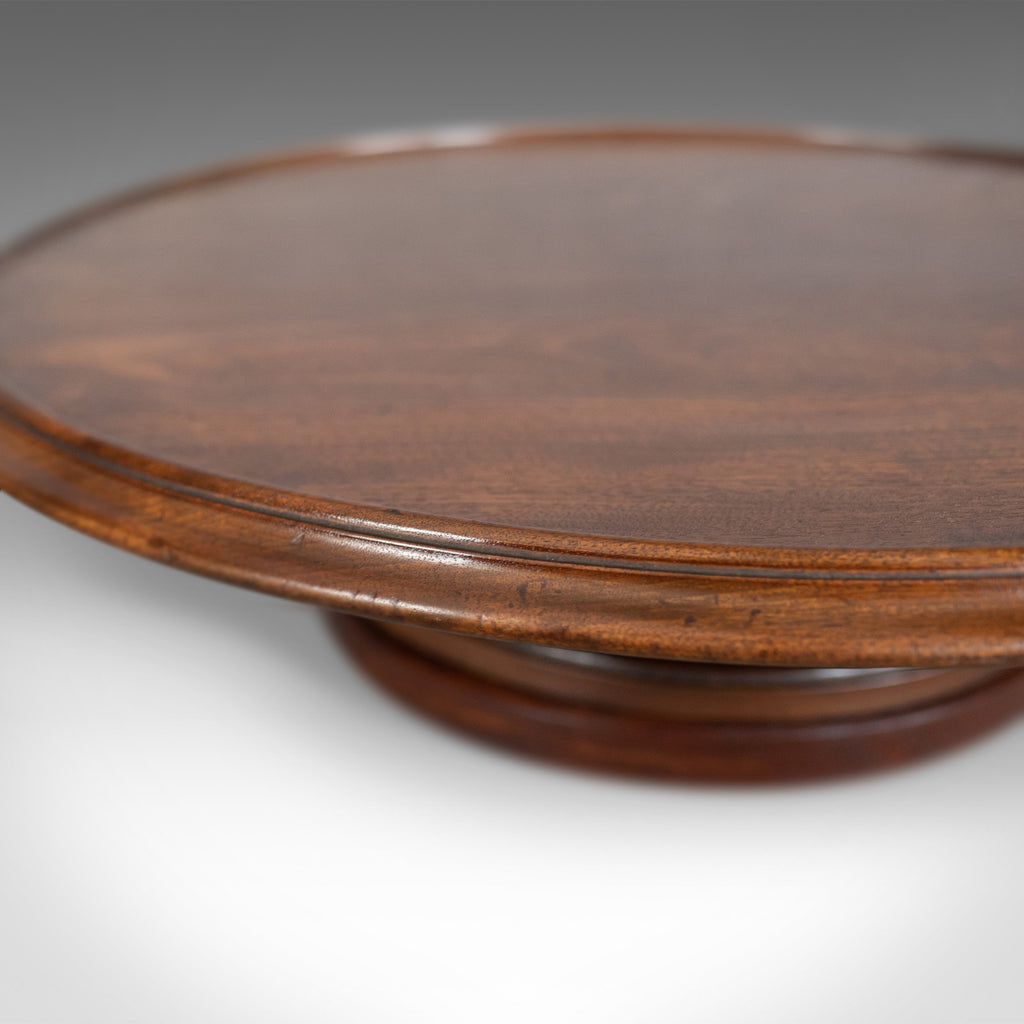

Henry Ford used an enormous one on his camping trips in the 1920s to avoid bringing a full contingent of servants along with his guests. By the next year, the Lima Daily News described an Ohioan "inaugurat. The name was repeated in a 1911 Idaho Statesman article – which describes it as "a cousin to the 'curate's assistant', as the English muffin stand is called" – and again in the 1912 Christian Science Monitor, which calls the "silver" lazy Susan "the characteristic feature of the self-serving dinner table". When she finally asked him for the price, he "told her it wasn't for sale, though of course it is". Unfortunately he presented this gift to her too late, which caused her to unleash an abusive tirade upon Laurie. Laurie was a Scottish carpenter who made his "Lazy Susan" to the personal specifications of a Hingham-area woman. She can be seen, but not heard, nor can she hear, she simply minds her business and carries out your orders in a jiffy. "Lazy Susan" is a step toward solving the ever-vexing servant problem. Laurie, as the resuscitator of "Lazy Susan", seems destined to leap into fortune as an individual worker. ĭespite various folk etymologies linking the name to Jefferson and Edison's daughters, the earliest use of these "serviettes" or "butler's assistants" being called a Lazy Susan dates to the 1903 Boston Journal: Made in 1909 by Finnish carpenter Ikahainen. The rotating serviette at "Penates", the estate of Russian painter Ilya Repin at Kuokkala. Howell's device ran more smoothly and did not permit bread crumbs to fall into the space between the Lazy Susan and the table. An American patent was issued in 1891 to Elizabeth Howell for "certain new and useful Improvements in Self-Waiting Tables". They employed the devices as part of their practice of communal living, making food easily and equally available to residents and visitors at meals. The Lazy Susan was initially uncommon enough in the United States for the utopianist Oneida Community to be credited with its invention. Cannon's 1887 mechanical dumbwaiter popularised this usage, replacing the previous meanings of "dumbwaiter". By the 1840s, Americans were applying the term to small lifts carrying food between floors as well. (Jefferson never had a Lazy Susan at Monticello, but he did construct a box-shaped rotating book stand and, as part of serving "in the French style", employed a revolving dining-room door whose reverse side supported a number of shelves. At some point during or before the third quarter of the 18th century, the name dumb waiter also began to be applied to rotating trays. It is, however, almost certain that the devices under discussion were wheeled serving trays similar to those introduced by Thomas Jefferson to the United States from France, where they were known as étagères.

An early 18th-century British article in The Gentleman's Magazine describes how silent machines had replaced garrulous servants at some tables and, by the 1750s, Christopher Smart was praising the "foreign" but discreet devices in verse. Part of the mystery arises from the variety of devices that were grouped under the term "dumb waiter" (today written dumbwaiter). 1780), auctioned for $3,900 by Christie's in London on 20 Jan. Here's the perfect lazy susan for every task.A mahogany George III-era dumbwaiter ( c. Once you try a lazy susan, odds are you'll find all kinds of places and ways to put one (or five!) to use. Some cabinets-especially corner cabinets-come with built-in lazy susans to enable you to reach what's in the back of an especially deep cabinet. It makes it so much easier to grab that spice jar or hair serum, without having to pull out everything else in the cabinet to reach it. The concept is centuries old, and first used predominantly to serve food at a meal-the dishes or condiments were placed on the tray at the center of the table, and everyone could spin it and reach the items they wanted.īut now, lazy susans are more often employed to make the most of every inch of storage space in cabinets, pantries, and shelves. But a lazy susan can do so much more than keep you from forgetting that you already have sesame oil.Ĭheck out all the ways you can use this tool-both in your cabinets and in your daily life.Ī lazy susan is a round tray that rotates on a set of bearings, allowing you to easily spin it and reach whatever's on the tray from any angle. It's the perfect storage workhorse, allowing you to easily see everything that's in a cabinet or on a shelf, so nothing gets lost in the dark recesses. Despite its name, the lazy susan is anything but lazy.


 0 kommentar(er)
0 kommentar(er)
